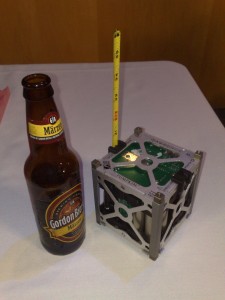Every so often I read something which stops me in my tracks. “A Long-Wave Theory on Today’s Digital Revolution” on the Booz & Co Strategy and Business site falls squarely into this category.
It’s an interview with historian Elin Whitney-Smith and has a range of insights that are worth sharing. Whitney Smith has spent 30 years researching and refining her theory of economic progress as a series of information technology disruptions, drawing on studies of subjects as varied as digital media design, medieval gender relationships, and the extinctions at the end of the Pleistocene epoch.
Her theory is that:
There have been six information revolutions in human history. Each represents a major change in the organizational paradigm — a change in how people form themselves into groups.
- The first was among hunter–gatherers just before the invention of agriculture;
- second, the rise of counting and written language;
- third, the fall of Rome;
- fourth, the invention of the printing press;
- fifth, the electric information revolution that accompanied trains, telegraph, and telephone; and sixth, the digital information revolution that we are now living through.
In the last three, the economics follow the same pattern: a long boom followed by a crash. Then a difficult and turbulent struggle begins. New ways of organizing emerge and the old ways, supported by established elites, fail.
This has close parallels with the theory of technology innovation as proposed to Ray Kurzweil, and has led him to propose his theory of ‘the singularity’ where humans and machines merge. Kurzweil’s theory is that each technology wave – from the discovery of fire – has happened successively faster. Whitney-Smith makes a similar observation:
Throughout history, the time frame has gotten shorter. Among hunter–gatherers, it took thousands of years to make the transition to agriculture. From the fall of Rome to the press was almost 1,000 years. The printing press revolution took 220 years. The electric revolution [trains, telegraph, and telephone] took 110 years, and, as I count it, the digital revolution started about 50 years ago. So, in recent information revolutions, there is a kind of rule of halves.
According to Whitney-Smith this has wide ranging implications, including changes for organizations:
We’re just starting to see the organizational innovation of the second phase emerge. These new companies take the Internet for granted. They are designed by a generation that had access to computers from childhood. Businesses that are less bound by old forms of hierarchical authority, such as Facebook (where any engineer can modify any part of Facebook’s code base), are thriving. So are companies with massive line worker input such as the “open management”
…companies that use these new ways of organizing will out-compete the old. If the rule of halves still applies, we would expect this new information order to manifest itself by sometime around 2012.
This is supported by evidence that companies are already embracing a ‘co-creation’ framework rather than a top down approach. For example I’m working with a number of forward-thinking clients on the deployment of Spigit – an online idea management tool which empowers everyone in an organization (especially front-line workers).
Whitney-Smith’s theory also has implications on a global scale:
In the short run, it’s better to be a member of the elite in China than a college student elsewhere with free information access. But bottom-up innovation will always be more successful in the long run. Therefore, if China continues its closed information policy, its success won’t last because regular people won’t be able to innovate.
Last but not least, the theory weighs in on the importance of moving away from the core to look for changes at the periphery and the edges:
“Lasting innovation in an information revolution doesn’t come from the elite, or from people who already have access to wealth and authority. It comes from the edges…”
